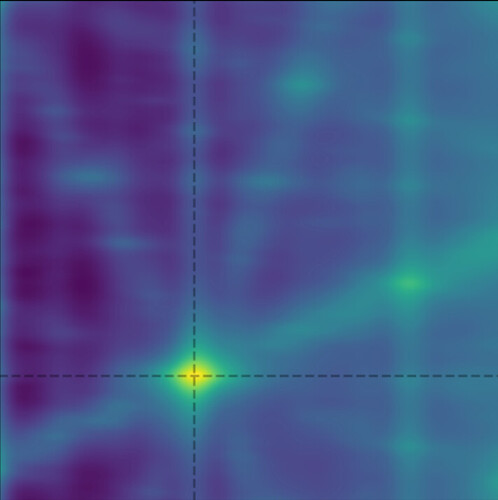Hi all!
Recently I’m working on a helical fibril with 4 nm diameter. Although classes with good 2D features could be generated, 3D reconstruction did not go smoothly. The main problem is that global resolution of the fibril only reach 5A upon helical reconstruction.
I’m wondering if fibrils with such a small diameter is processable. If it can be resolved, what should I do?
Certainly possible - we resolved this one which is 4.6nm wide to 2.8Å using helical refinement in cryosparc: x.com
But will very much depend on the details - are you confident you have got the helical symmetry right, and how did you determine it? That is by far the trickiest part, with a lot of false minima.
Hi!
Here’s the way I determined the symmetry:
- Generate the initial model
- Run helix refine without symmetry input
- Run Symmetry Search with volumes in 1) or 2) (depends on which one works better)
And for my current job, the Symmetry Search gives the local minima like this:
It seems that the dot is the most plausible result.
Would you suggest a better approach to determine the symmetry parameter?
Thanks a lot!
This filament looks interesting. Has this been online?
Just on twitter - not published - but there are some details in the linked thread.
In our case, symmetry search in CS did not work - it gave “plausible” solutions, but none of them turned out to be exactly right. They gave high-ish resolution values out of helical refinement, but not real/interpretable structural features.
What did work was running ab initio in C1 (required some experimentation with parameters to get it to behave), and then using the real space helical symmetry search in HI3D (https://helical-indexing-hi3d.streamlit.app). The parameters obtained from HI3D then allowed us to obtain a good map from helical refinement.
Classification revealed that helical refinement had combined segments with mixed directionality - I used volume alignment tools to match the orientation of the two classes with different directions.
After that, helical symmetry expansion followed by local refinement with a mask around the central portion of the helix gave the best density. Good luck!
1 Like
Thanks for the suggestion!
I’ll try HI3D to see if it can work out for my case, hope there are some good results!
